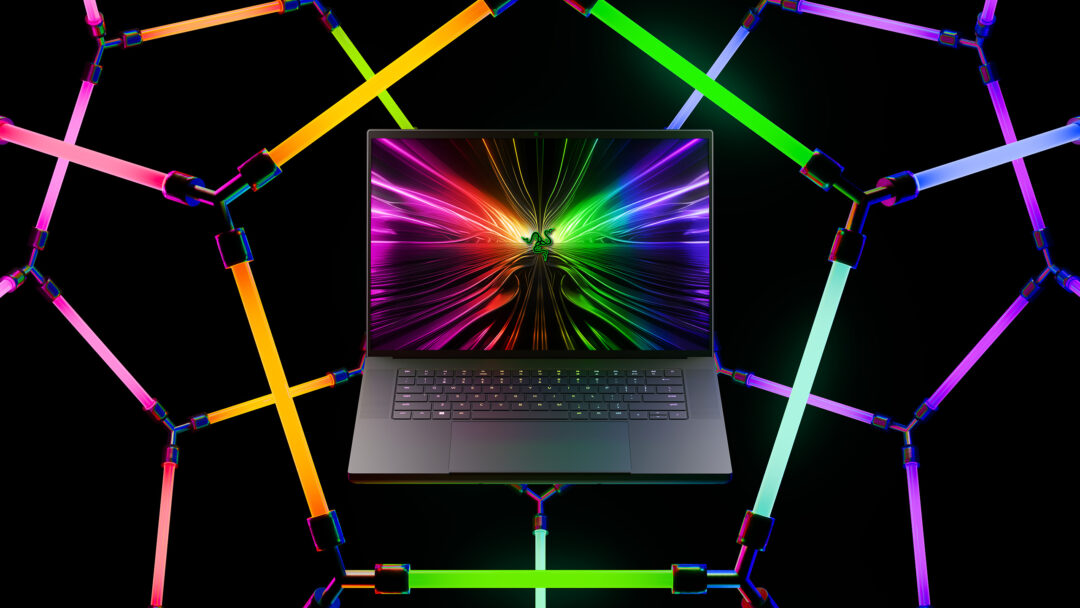Razer names their products in a delightfully simple way: Razer Blade 16 is a successor to the Razer Blade 16. Similar to the approach that Apple follows with its MacBooks.
Every model has a more formal model number, of course, and there are countless variants in each model generation.
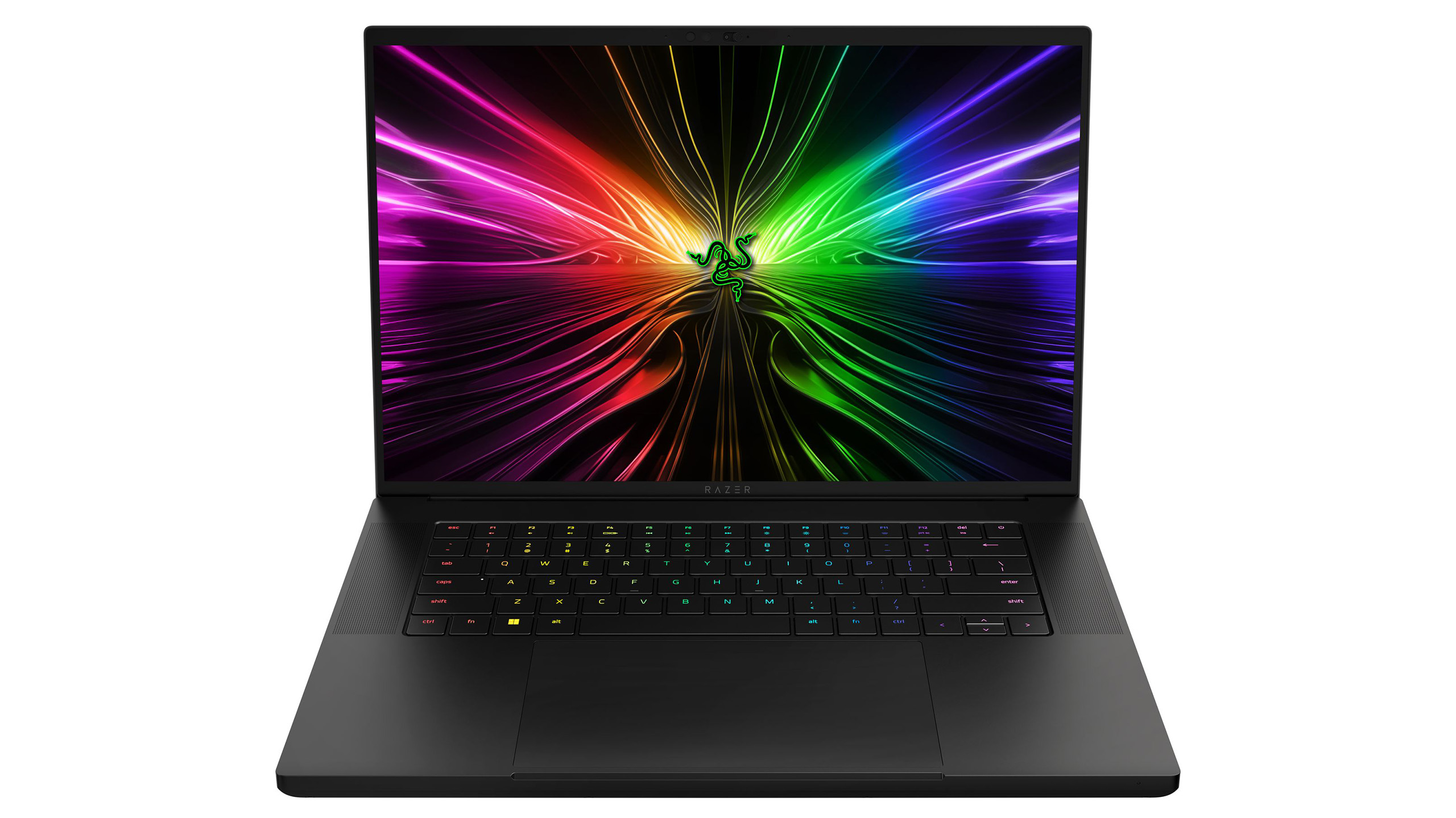
The version of the Razer Blade 16 that we have received for testing (RZ09-0510) is one of the top models. Here, the engineers have been granted permission to clear the top shelf of the component warehouse, and the result is a laptop that pretty much reaches the maximum in all areas. The Blade 16 we tested came with “just” 32 GB of RAM, but can actually be fitted with up to 96 GB on board!
Classic Razer
The Razer Blade 16 is quintessential Razer. Which should be seen as high praise in the geekiest of ways. The milled aluminum casing is jet black (it’s also available in a silver finish) and oozes high-end craftsmanship and solidity. Every line is so razor-sharp that there’s no doubt in fans’ minds about the brand. And so rounded that you can feel you’re holding a luxury product in your hand.
The 16-inch screen in 16:10 format has a narrow bezel. And the resolution is a reasonable QHD+ (2,560 x 1,600 pixels). The refresh rate is 240 Hz, as we are dealing with a high-end gaming machine. The tested model has an OLED display, but you can also get a slightly cheaper version with a conventional 240 Hz display. In honor of graphic artists, the Blade 16 is also available in a version with a slower 4K display.
The cover, unlike most slim laptops, feels physically solid and stable and features Razer’s green, illuminated snake logo. There are also RGB lights in the keyboard (individually for each key). But otherwise, the Blade 16 is discretion itself.
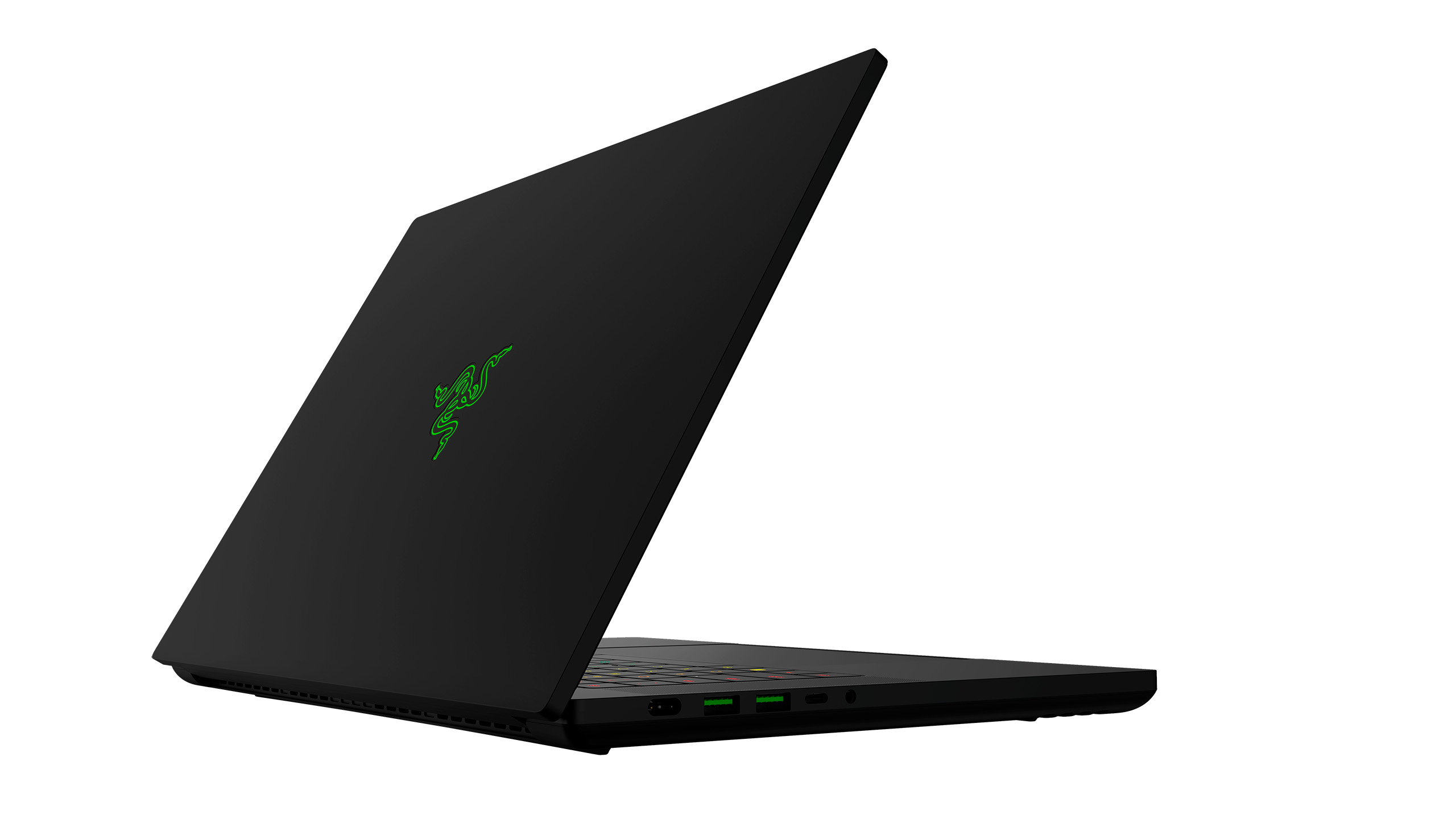
For the price, we would have expected a mechanical keyboard – not a membrane keyboard. Even though it’s exemplary precise and responsive to type on. It’s a little surprising that in such a wide enclosure there’s no room for a numeric keypad, but the reason is probably cooling.
Hardware and benchmarks
At the heart of the Razer Blade 16 is a 14-generation Intel Core i9-14900HX processor. In other words, the absolute core-packed top model with eight fast performance cores, 16 efficiency cores and 32 process threads. The maximum speed is 5.6 GHz.
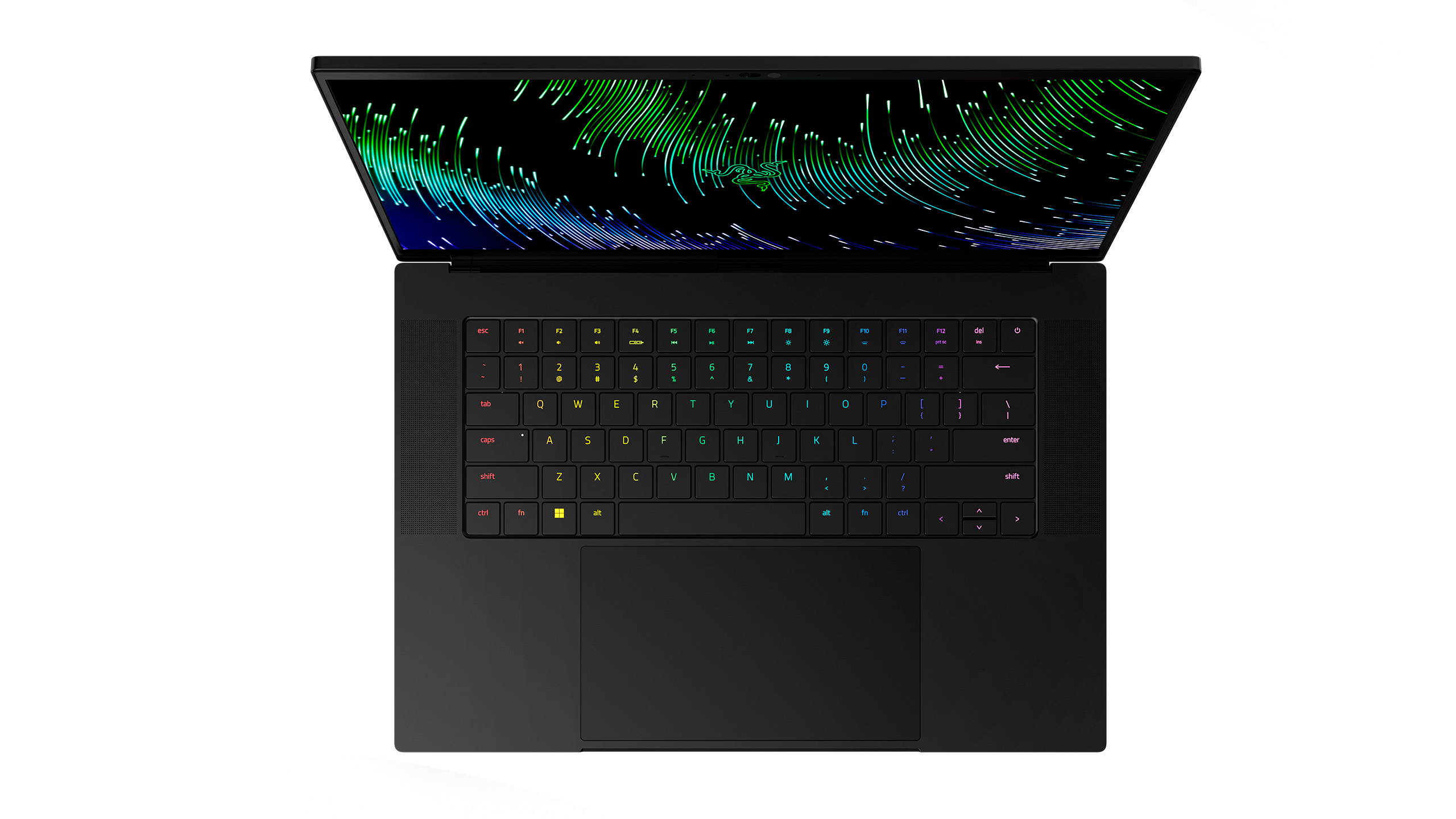
The graphics card is the mobile version of the Nvidia GeForce RTX 4090, again a top model, and with 16 GB of dedicated graphics memory. There is 2 TB of SSD storage.
The range of ports is perfect for gaming: Two USB-C ports, including one with Thunderbolt 4 for access to external DisplayPort or HDMI monitors – possibly via a USB dock like the Corsair TBT-200. There are three USB-A ports, which makes sense as many gaming accessories still use the old port type.
Fast – but not crazy fast
With a price tag of almost EUR 4000 and all the latest hardware on board, the Razer Blade 16 is expectedly lightning fast. But it doesn’t break the scale.
In fact, the results in our benchmark measurements are almost identical to those we saw on the Alienware M18 in late summer last year! This is not really surprising since the two computers have the same graphics processor with the same amount of RAM, i.e. Nvidia GeForce RTX 4090. Both also have the fastest version of Intel’s Core i9 processor. But the Alienware machine (which, incidentally, was named high end gaming laptop of the year) had a 13th generation processor, while the Razer Blade 16 has a brand new 14th generation version.
Evil tongues (and tech media outlet The Verge) will argue that the biggest difference between the 13th and 14th generation processors from Intel is the number. In any case, it’s hard to spot anything resembling a real improvement.
The Geekbench processor test ends with a result of 16,674 in multicore and 2,825 in single-core.
The Geekbench processor test ends with a result of 16,674 in multicore and 2,825 in single-core.
But gaming is all about fast 3D graphics, and Razer delivers. The 3D graphics test 3DMark Time Spy ends with a result of 19,521, while the older Fire Strike test ends with 31,592. That’s enough to run any game today with a fully adequate framerate.
The ray tracing test Port Royal also does well: 13,696.
To put the numbers into perspective, the Razer Blade 16 is roughly twice as fast as the Razer Blade 14, which was named High End Gaming Computer of the Year 2021.
But not faster than last year’s best gaming PC. In all of the tests mentioned, the Alienware M18 is exactly one insignificant point faster than the Razer Blade 16.
Vulcan graphics are missing
On one point, the Blade 16 test unit differed from the majority. Several of the benchmark tests, namely all based on Vulcan, refused to run. Vulcan is an open standard for 3D graphics across machine platforms.
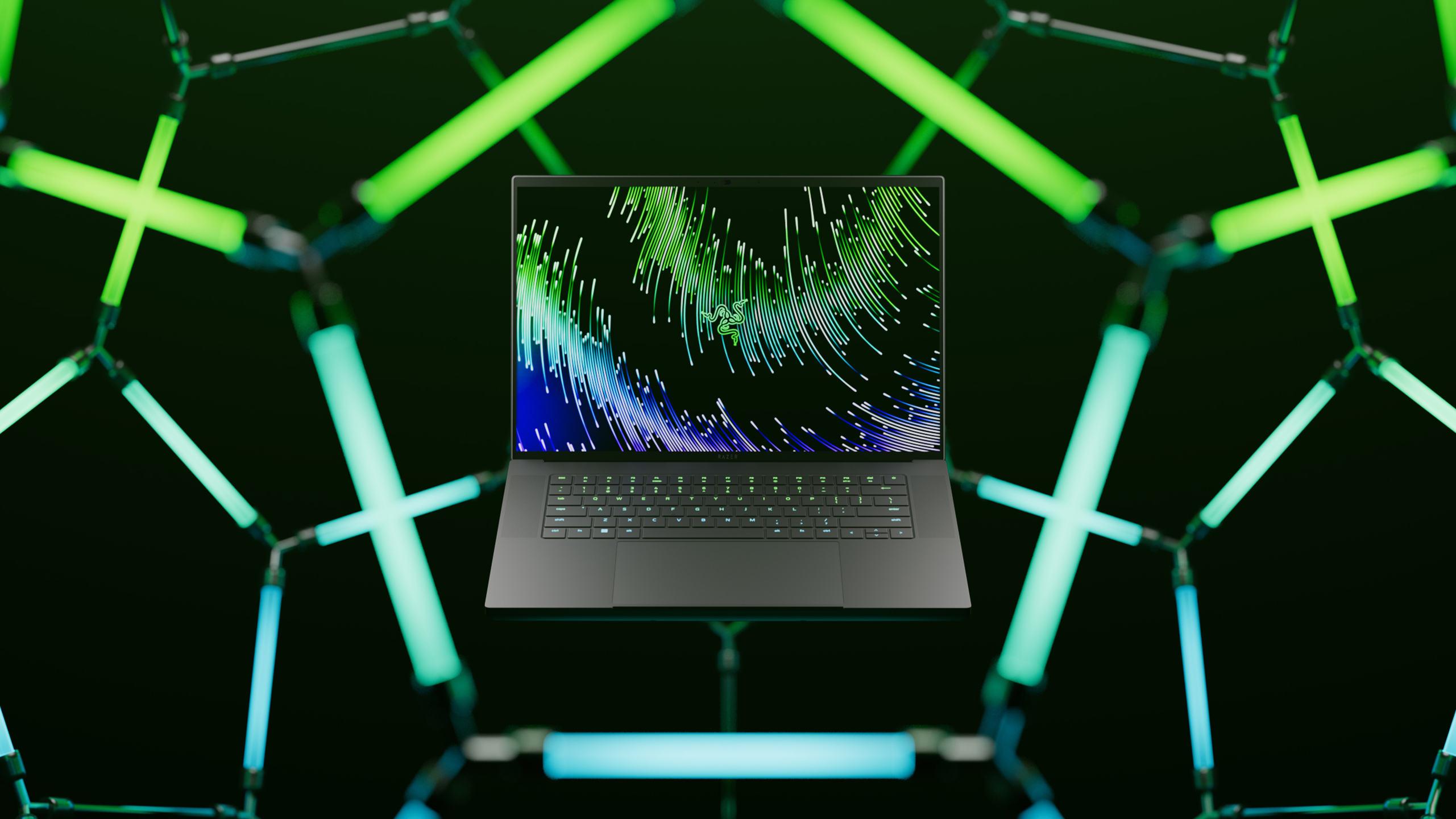
Normally, it’s no problem for modern processors to run Vulcan graphics. And I’ve seen the same tests run on similar machines plenty of times with no issues. But neither hours of tweaking settings in drivers and BIOS, hours spent with Razer’s support staff, nor a complete reinstall helped.
The likelihood of the same problem applying to all copies is minimal, and the tested machine behaved as expected in all other areas.
The battery test is never a proud moment for a slim gaming PC. The Razer Blade 16 died after just under two hours of intense load. That’s no worse or better than similar machines. So don’t forget to bring the charger. Luckily, it’s relatively lightweight.
Verdict
The Razer Blade 16 is, all things being equal, one of the fastest gaming laptops on the market today, and if you need the very best performance, this is the segment to look at. But the Blade 16 is also one of the most expensive you can buy. And the fact that a brand new top-of-the-line model doesn’t perform better than a PC from last year – which is considerably cheaper in its 2024 equivalent – is not something that warrants a top score.
However, when we compare specific machines as closely as we do here, it should be noted that Alienware only has a 165 Hz refresh rate on its 18-inch screen, while Razer manages 240 Hz on a 16-inch screen.
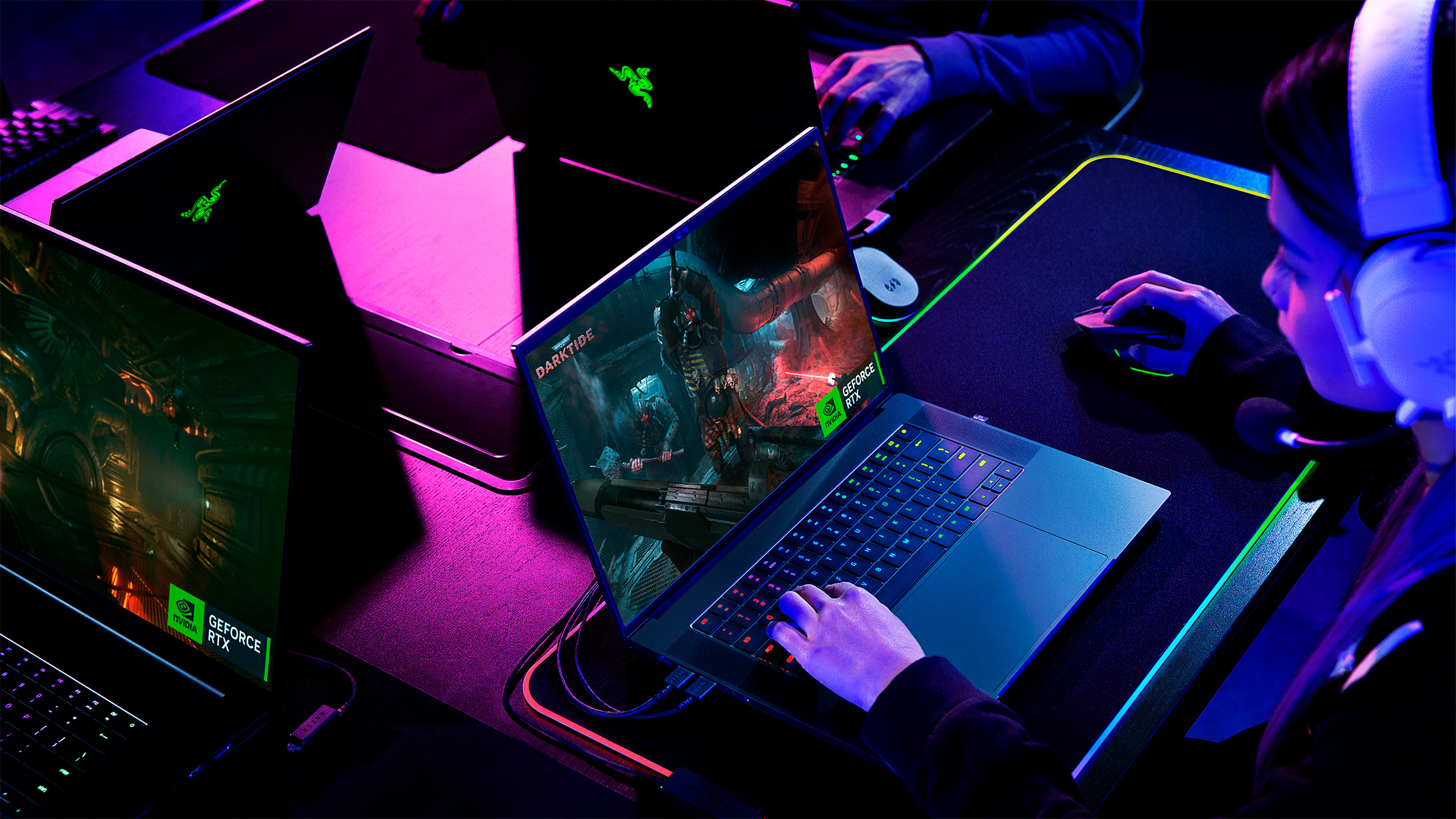

3999 €
Specifications
- Processor: 2.2 GHz (max. turbo 5.6 GHz) Intel Core i9-14900HX 24 cores (32 threads)
- Display: 16″ OLED QHD+ (2,560 x 1,600) 240 Hz refresh rate
- Memory: 32 GB DDR5
- Storage: 2 TB SSD
- Graphics: Nvidia RTX 4090 w. 16 GB GDDR6
- Operating system: Windows 11 Home, 64 bit
- Dimensions and weight: 35.5 x 3.0 x 24.4 cm / 2.4 kg
- Connectivity: Wi-Fi 7, Bluetooth 5.4, 2 x USB-C (1 with Thunderbolt 4), 3 x USB-A 3.2, HDMI 2.1, SD card reader, 3.5 mm minijack (audio), HD webcam
- Web: razer.com
Benchmarks
-
- Geekbench 6: 16,674 (multi-core) / 2,825 (single-core) / 178,923 (compute)
- PCMark 10: 7.446
- 3DMArk Speed Way: 5,730
- 3DMark Port Royal: 13,696
- 3DMark Solar Bay: not compatible
- 3DMark Time Spy: 19,521
- 3DMark Fire Strike: 31,592
- 3DMark Wild Life Extreme: not compatible
- 3DMark Wild Life: not compatible
- 3DMark Night Raid: 69,919
- Cinebench R15: 264 fps / 4.139 cb
- Cinebenc R23: 23,919 pts (multi-core) / 2,146 pts (single-core)
- Cinebench R24: 22,438 pts (GPU) / 1,473 pts (CPU)
- HDTach: 2.149 MB/s
- 3DMark Storage Benchmark: 2,521
- Battery test: 1:53 hours
